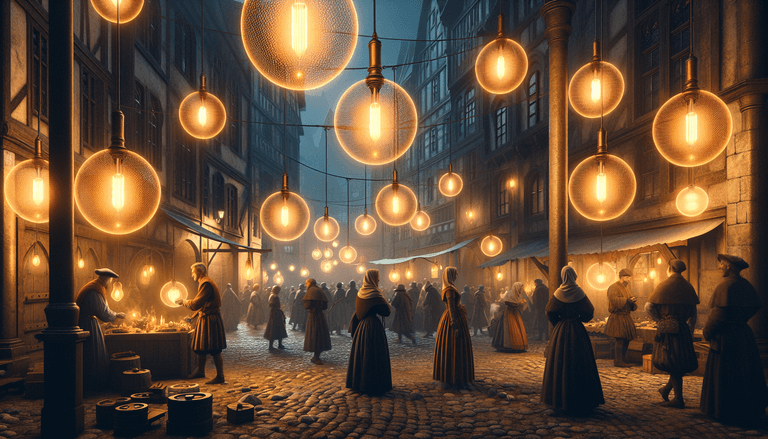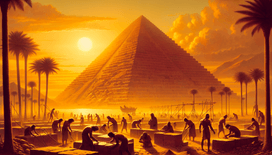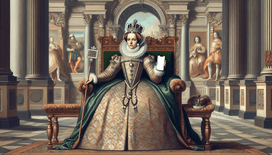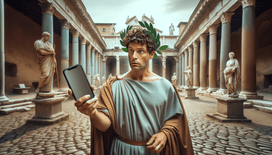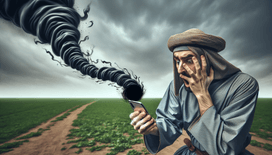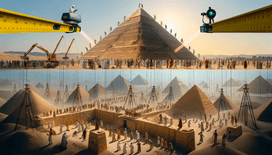Picture, if you will, the Middle Ages, an era often stamped in history as dark, as if the sun took its 400-year sabbatical. It conjures up images of dim candle-lit cathedrals, peasants muddling through fields, and knights, bridled in shining armour, relying on moonlight to navigate their nightly escapades. Now, grab your imagination by its medieval reins and fast-forward to a world where this bygone era gets its hands on the shining beacon of the modern world: the trusty lightbulb.
Let there be (more) light!
Ah, the lightbulb! That glowing glass orb of promise, turning nights into days, and imaginably, busting a significant dent into the insomnia business. Conceived by none other than Thomas Edison, or rather, as some of his contemporaries could argue, "improved" by Edison. Still, whether Edison's flickering partners in invention deserve accolades, one truth remains indubitable, the lightbulb could have sent medieval folks into a veritable tizzy of enlightenment!
Imagine the mob of medieval minds regarding the miraculous device. Visions of potential applications would mesmerize like a camel on roller skates! Crafty monks would plug away at calligraphy during the longest of nights, scribbling their manuscripts under the reliable glow of tungsten and glass rather than the capricious wavering of candles. Oh, the scriptures that may have inscribed their way into history!
The liturgy takes on a new and improved...lit!
The church, central to medieval societal structure, never one to shirk an opportunity to illuminate the masses (sometimes literally, sometimes figuratively), would doubtlessly embrace the change with arms, as well as crosses, wide open. Newly built chapels across the land, glowing like festive hootenannies, attracting flocks of the faithful.
Stained glass windows, painstakingly crafted to harness and scatter light, might find their way to our present day less as wondrous kaleidoscopic displays and more as banal bits of glass. Instead, congregations would be awed by their eerily angelic surroundings, humming serene Gothic hymns by the brilliance of overhead lighting, with nary the smell of scorched wax searing their pious nostrils.
But would the knights be wooed?
Our noble warriors, those gallant knights, would have all manners of light-induced intrigues. Tournaments, stretching to the wee hours without the curtain call of encroaching darkness. Jousting matches under the stars, yet still fantastically illuminated, overcoming endless empty gloom, as some chivalrous swashbuckler flings his lance under a sky flaunting its celestial grandeur.
And speak not least of dungeons, drab memorials of despair that would now be bedecked with much interest (and perhaps some LED flair)! Inmates could spend their time whiling away the jailbirds comfortably under their cell’s own personal festal glow instead of a smouldering tallow tower.
A light source for the oppressed
Everyday peasants might possess aspirations of harnessing this light. Although finances might still be replete with potatoes and taxation grievances, village after village could stretch productivity to the limits. Fields harvested after sundown, shops open significantly longer to sell their wares to torch-wielding (or should I say bulb-wielding?) folks! This unforeseen step towards 24/7 commerce would be an epoch unto itself.
A rising innovation in this age would not squander latent knowledge. Perhaps universities would spur a renaissance earlier, with students burrowed into parchments and papers, blessed with clarity from well-lit libraries, sparking intellectual fires quite different from flaring sconces!
Bright future or blundering mishap?
Yet, think not this visionary world be entirely aglow with delight! Consider this vividly: varlets and vagabonds, once masters in the shadows, could lament at the lightbulb stealing their cloak of obscurity. After all, some commerce thrives under cover of darkness, be it nefariously scheming or clandestinely bold.
And what of the mysterious spectres looming large in medieval artistry? Would this newfound radiance disenchant phantoms that once played laughably on men’s camouflaged fears? Ghosts and goblins might have had to find new avenues of employment, like opening ghost tours unrestricted by sunlight! Finally, the modern denomination of "fear of the dark" might meet its quite literal demise in an epoch that never brooks true gloom!
As Timewarp Terry shifts back to his fantastical reality, one still untethered by the anchoring illumination of a lightbulb, one thing is abundantly clear: history as we know it is underpinned by all manner of incandescent possibilities. And like the ethereal glow of Edison's glass marvel, perhaps it's not stark electricity that ignites change but the blaze of human imagination.
